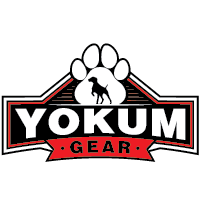Engaging in skijoring, an exhilarating winter sport that combines cross-country skiing with dog mushing, requires more than just enthusiasm and energy. The right equipment, particularly the harness, is essential for both safety and performance. This article delves into the aspects you need to consider when choosing the perfect skijoring harness for your dog.
Understanding Skijoring
Skijoring is a team sport that involves a harnessed dog pulling a skier. This setup not only maximizes the dog's power but also requires the skier to maintain balance and pace. Therefore, the choice of harness plays a crucial role in ensuring comfort, control, and safety for both the dog and the skier.
Important Factors to Consider
1. Harness Type
There are various harness types designed for different activities. For skijoring, the most commonly used are the X-back harness and the H-back harness.
- X-Back Harness: A popular choice, it distributes the pulling force evenly across the dog's body, reducing strain on any single point. This harness is particularly effective for long-distance pulling and high-intensity activities.
- H-Back Harness: Known for its adjustable straps, the H-back harness provides flexibility in fitting different dog shapes and sizes. It also offers greater mobility, making it suitable for mixed terrain.
2. Proper Fit
The harness must fit your dog properly to prevent injuries and maximize efficiency. Take accurate measurements of your dog’s neck, chest, and length. The harness should be snug but not tight, ensuring your dog can move freely and breathe without restriction. Look for adjustable straps to fine-tune the fit.
3. Material and Durability
High-quality materials like nylon or polyester are ideal for skijoring harnesses due to their strength and durability. Consider harnesses with additional padding to ensure comfort and reduce chafing during long sessions. Reflective materials are also beneficial for visibility in low-light conditions.
4. Attachment Points
A skijoring harness should have a strong attachment point for the towline. Most harnesses come with a single attachment point at the back, but some may feature additional points at the chest or sides. Ensure that these points are reinforced and securely stitched to handle the pulling force.
5. Hydration and Ventilation
Although skijoring is a winter sport, dogs can still become dehydrated or overheated. Look for harnesses with built-in hydration systems or those designed to allow unrestricted movement and airflow. Regular breaks and access to water are also crucial for your dog’s health during skijoring.
Additional Accessories
Beyond the harness, other accessories can enhance your skijoring experience:
- Towline: A shock-absorbing towline can reduce sudden jerks, making the experience smoother for both you and your dog.
- Quick-Release Mechanism: In case of emergencies, a quick-release mechanism allows you to detach the towline swiftly.
- Booties: Protect your dog's paws from ice and abrasions with durable booties designed for winter conditions.
Conclusion
Choosing the perfect skijoring harness involves considering various factors such as harness type, fit, material, and attachment points. Remember to prioritize your dog’s comfort and safety, and don't skimp on quality. With the right harness, you and your canine companion can enjoy the thrill of skijoring while ensuring a safe and enjoyable experience.

